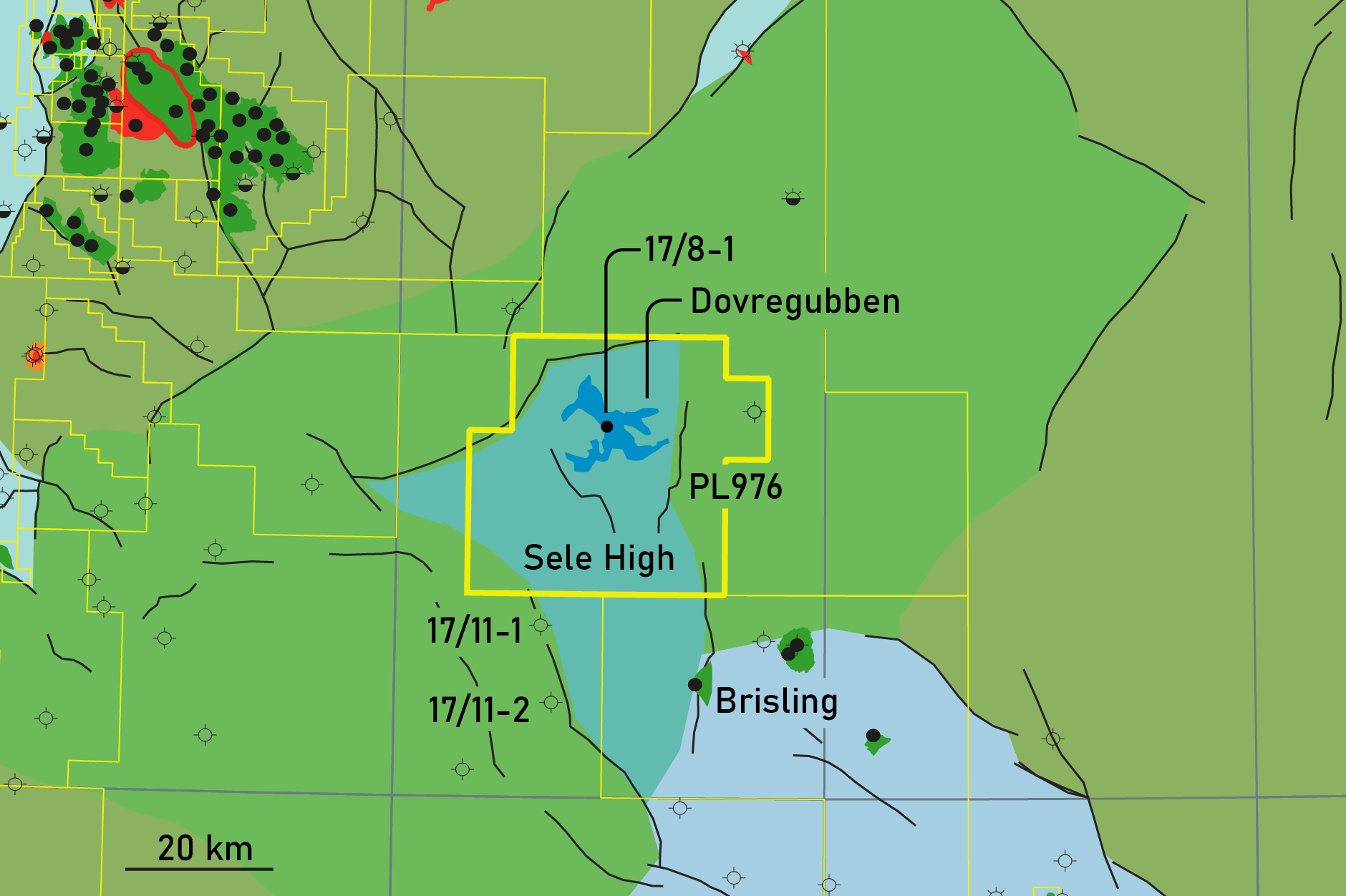When extrapolating the Tornquist lineament from Denmark and the Highland Boundary fault from Scotland, one would arrive in the area of the Sele High in Quadrant 17 of the Norwegian North Sea.
Now, for the first time, Lundin and partners are testing the prospectivity of this high in PL976. Being at the crossroads of the continents that collided during the Caledonian orogeny when Avalonia, Baltica and Laurentia amalgamated, there are less spectacular places in the North Sea to drill a well.
Dovregubben
Well 17/8-1 is targeting the Dovregubben prospect in the northern part of the Sele High, with an expected gross unrisked resource of 209 MMboe (as was presented during Lundin’s Capital Market’s Day presentation on 28th January this year).

A Central Graben source?
The first question one would probably ask is where the oil would come from. Being more than 100 kilometres away from the Fisher Bank Basin kitchen, it seems unlikely that oil would have made it all the way from the west. At the same time, a more local source to the immediate west of the Sele High is unlikely as well. Two wells were drilled in this area, but although at least one of those (17/11-2) did prove the presence of Jurassic source rocks, the maturity proved to be too low to have formed an expelling source rock.
Looking to the east of the Sele High, there is a small discovery made by Phillips – Brisling – drilled through 17/12-2 in the early days of North Sea exploration (1973). An oil-bearing Jurassic sandstone was found at 2130 m with 7 m of net pay and it produced a maximum of 2,300 BOPD when tested. The well completion report mentions that the “Jurassic Basin Analysis Study” would shed more light on where to drill an appraisal well – updip or downdip – but the world moved on and the company probably found bigger fish to fry.
In conclusion, a quick look at the wells drilled surrounding the Sele High suggests that if oil is present on the High itself it is probably sourced from Egersund Basin in the southeast.
Reservoir
Then the question is in which stratigraphic interval the prospect has been defined? The Paleocene is not seen as a target in this area, so it is likely that the thin Triassic/Permian succession on the high, or the deeper Paleozoic stratigraphy form the most likely candidates.
HENK KOMBRINK





